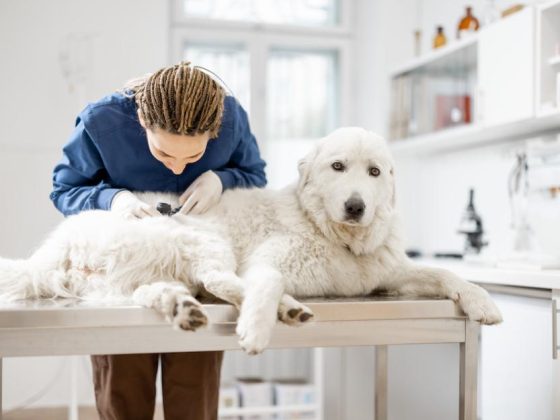Skin tags often trigger concern among dog owners. These fibrous tissue growths can appear as singular or multiple bumps on your dog’s skin. They can crop up anywhere on the body and do not spread. It’s worth noting that ticks on dogs can resemble skin tags, so it’s crucial to carefully examine any new growths to differentiate between the two.
You might be familiar with what skin tags are, but what causes them and how do they affect your dog? This article will address these key questions.
What Triggers Skin Tags?
The exact cause of skin tags is still unclear, but several factors are believed to contribute to their development.
Exposure to environmental chemicals.
Inadequate skin care.
Genetic predisposition.
Untreated bites from certain creatures.
Nutritional deficiencies in your dog’s diet.
How to Recognize Skin Tags (Symptoms)
Skin tags are small and can be difficult to spot. It might take a while before you notice them on your dog. Here are the most common signs of skin tags in dogs.
Small, soft, rounded bumps on your dog’s skin.
Tiny patches of hair growing on the tags.
Stalk-like growths that resemble warts but aren’t warts.
Potential infection around the tag.
Bleeding if the tag is scratched or pulled.
Diagnosing Skin Tags in Dogs
The most effective way to identify skin tags on your dog is by regularly examining its body. Pay close attention to any bumps on the skin while grooming. If you find some skin tags on your dog’s body, it can be challenging to determine if it’s a harmless skin tag, a tumor, or another serious condition.
Consult a veterinarian for a thorough examination. The vet can take a sample to rule out serious conditions like skin cancer or other potential medical issues. If a serious condition is identified, begin the recommended treatment immediately.
When Should You Consult a Vet for Skin Tags?
Skin tags can pose a significant health risk if they appear in certain areas of your dog’s body or display abnormal characteristics. If you notice any of the following, take your dog to a vet for an evaluation.
Changes in the color, shape, and size of the skin tag.
Bleeding or discharge from the site.
Presence of skin tags around the mouth, lips, or eyes.
Pain or discomfort when the tag is touched.
Itching or irritation around the skin tags.
Skin Tags on the Dog’s Mouth
!\[Skin Tags on the Dog’s Mouth\](Image Source: Top Dog Tips)
Treatment Options for Skin Tags
If your vet suggests treatment, it’s important to start immediately to avoid any complications. Vets typically use three methods to treat skin tags.
Surgical Removal: If the skin tag is large and hard, your vet might opt for surgery to remove it. The wound is then stitched closed.
Cryosurgical Removal: This is a common method for small to medium skin tags. The vet uses liquid nitrogen to freeze the tags, which then fall off naturally after a few days.
Thread Ligation: In this method, the vet ties off the tag with a thread to cut off blood supply. After a few days, the tag naturally drops off the skin.










